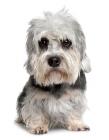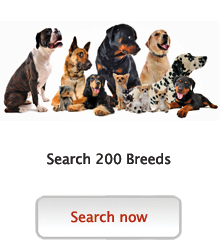Dandie Dinmont Terrier
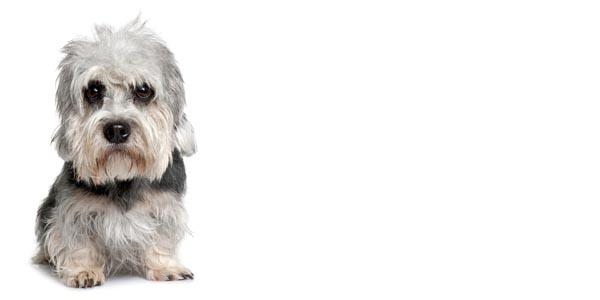
In my own words
I’m a happy little chappy but I’m very independent! My kind used to hunt badgers and otters, did you know that? The hunting instinct is still strong in me, I can’t resist chasing after little animals if I see one! Don’t be fooled by my small size, I’m a lot faster than I look!
Did you know my kind is the only dog breed ever to be named after a fictional character? How cool is that! Sir Walter Scott wrote about us in the book ‘Guy Mannering’ in 1814... I don’t know if the book is any good but it has to be if my kind is in it!
My ideal owner(s)
Singles
Apartment dwellers
Families with older children
Retirees
What they say about me
Happy-go-lucky
Affectionate
Independent
Bold and brave
Please read on, to find out more about me, and whether I will be someone you can be happy with for the next 12 years, or even longer!
Is this Dandie Dinmont Terrier for you?
Test your knowledge about the Dandie Dinmont Terrier
Information essential about the Dandie Dinmont Terrier
Kennel Club Group:
Terrier
Size:
Small: Weight 18 – 24 lb (8 – 11 kg)
Height: 8 – 11” (20 – 28 cm)
Popularity:
The breed was placed on the list of Vulnerable Native Breeds by the Kennel Club in 2006. Prior to this only 21 puppies had been registered with the KC in 2003. Work has been done to build up this breed again and 2010 saw 151 puppy registrations – the highest number in ten years. The breed is still a rare breed.
Breed History:
The breed originates from the border area between Scotland and England and dates back to the early 1700s when they were used for hunting badgers and otters. It is believed the dogs may have been a type of Border Terrier or a cross between Scotch Terriers and Skye Terriers.
The breed was relatively unknown until they were written about in Sir Walter Scott’s 1814 novel ‘Guy Mannering’. In the book, there was a character called Dandie Dinmont who owned several terriers called “Pepper” and “Mustard” after the coat colours. This character was based on a real life farmer, Mr James Davidson, who owned several terriers. Mr Davidson who spent time documenting his breeding is accepted as the father of the modern breed.
By the mid-1800s the popularity of the breed had grown after Sir Walter Scott’s book and they became known as the Dandie Dinmont Terrier. Even today, they are the only dog breed to have been named after a fictional character. The Dandie Dinmont Terrier Club (DDTC) was formed in 1875 and is the third oldest dog breed club in the world. In 2006 the breed was placed on the list of Vulnerable Native Breeds by the Kennel Club. The number of puppy registrations reached a low when only 21 puppies were registered in 2003 but work has since been done to improve the registration numbers with 151 puppies being registered in 2010, the highest number of registrations in ten years.
Character:
This breed is affectionate and happy-go-lucky. They are intelligent but very independent and while they are good with older children, they should not be trusted with non-canine pets such as rabbits, hamsters and guinea pigs. They are lively, bold and brave little dogs and make good watch or guard dogs.
Temperament:
The Dandie Dinmont makes a great companion dog with the happy personality. They make excellent guard or watchdogs and are suitable for older children but should not be trusted with small household pets. This breed is tough and lively and can be prone to challenging other animals and sometimes dogs. They can get along well with cats provided they have been brought up with them from a puppy. This breed can develop Small Dog Syndrome if they are not given consistent training and will believe they are leader of the pack which can lead to behavioural problems including stubbornness, separation anxiety, guarding, dog aggressiveness and excessive barking. Provided they are given consistent, firm training they make great companion dogs.
Conformation:
The Dandie Dinmont is a low and little dog, longer than they are tall. The head is large with a topknot in proportion to the body. The skull is broad, tapering towards the eyes and the muzzle is deep. The eyes are large, round and wide set and are dark hazel in colour. The ears are pendant shaped, set low and wide and hang close to the cheeks. The legs are short with the back legs being slightly longer than the front legs and the tail is curved and tapers to a point.
Coat:
The coat is a mixture of soft and harsh hair and is about 2 inches (5 cm) long. The hair on the underside is soft and the head has a very silky topknot. The colour of the sets usually by the time the dog is eight months old while the dog will continue to physically mature until it is about two years old.
Colour:
The coat comes in pepper or mustard. Mustard puppies have a dark brown coat which lightens to shades of red when as they grow while pepper puppies are black and tan when born and turn silver as they grow. Pepper coats have a silver topknot while mustard coats have a cream topknot. Usually the legs and feet are darker in colour than the body
Training:
This breed is independent and wilful and can be stubborn to train. Early socialisation and training is a must for this breed. They require firm and consistent handling to prevent them developing Small Dog Syndrome where they believe they are leader of the pack.
Care:
This breed requires regular brushing with a professional groom to pluck/strip dead hair once or twice a year. This breed sheds little to no hair.
Health:
The lifespan of a healthy individual is between 12 – 15 years. If you buy from a reputable, responsible breeder, health problems should not occur. This is generally a healthy breed but due to their long body, this breed can suffer back issues particularly with slipped discs which can lead to a range of problems such as paralysis or loss of bladder and bowel control depending on the severity. Some minor issues they can be prone to include glaucoma, epilepsy, hypothyroidism and Cushing’s syndrome. In order to combat glaucoma in this breed, it is recommended by the breed clubs that they should have a gonioscopy conducted several times through their lives. This breed has a slightly higher risk of canine cancer.
Exercise:
This breed requires a good daily walk to keep them fit and healthy. They also benefit from playing in safe open areas and benefit from an average sizes, securely fenced yard. They do well in an apartment provided they are sufficiently exercised and are relatively inactive indoors. Take care when letting this breed off the lead as they have a tendency to chase small animals.
You may also like:
If you like Dandie Dinmont Terriers, you may like other breeds with similar characteristics »
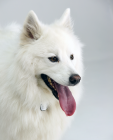
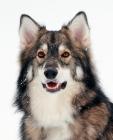
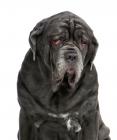
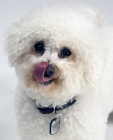
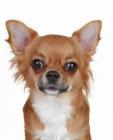
Advice on choosing your breed »
Find an animal shelter or rescue home where a Dandie Dinmont Terrier is waiting for a new home »
The following grid gives a fast track review which covers all breeds. You can apply it to help you decide if a Dandie Dinmont Terrier is suitable for you, the environment where you live, your personality and your lifestyle. On the grid, 1= strongly disagree, and 5= strongly agree. For example, if you are looking for a dog that suitable for urban living, look down the list under Environment, and you will see that Dandie Dinmont Terriers are suitable for urban living, scoring 5. If you want a guard or watch dog, look down at Role and Suitability, and you will see that Dandie Dinmont Terriers make excellent guard and watch dogs, and score 5. You might like to save or print off this section and keep it for reference while you check some other breeds before making your final choice.
Be the first to rate this breed »
|
*PLEASE NOTE: All our breed profiles are general, and all dogs are individuals. Always talk to the breeders and meet the owners you are buying from. Try to meet the dog and its parents if it is a puppy in their home environment.








